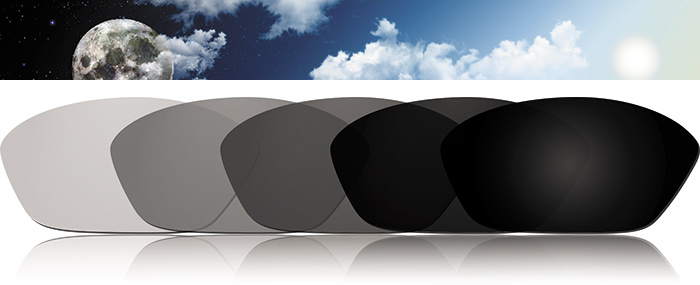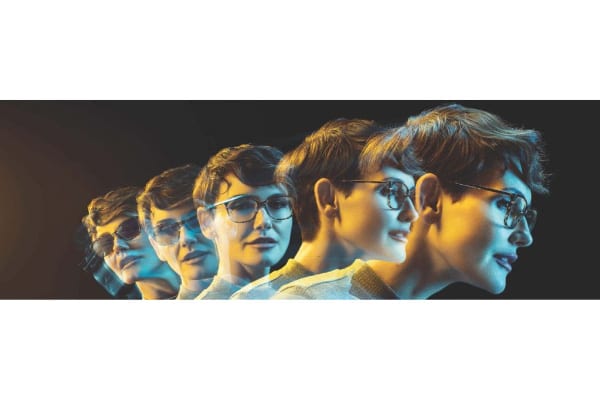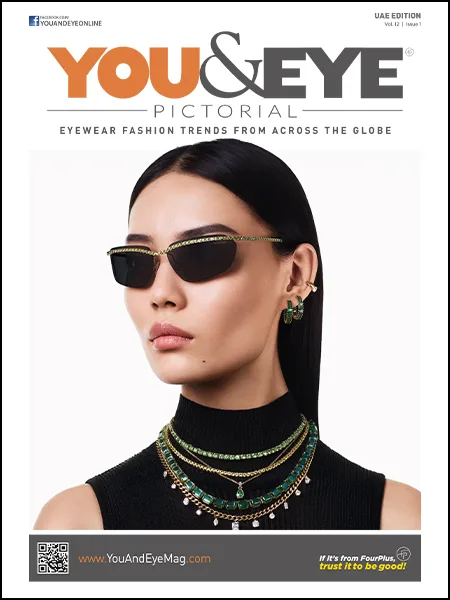 With photochromic lenses, the wearers get a chance to look at the world through tinted glasses, literally speaking. It is no wonder therefore, that photochromic eyewear is fast gaining popularity.
With photochromic lenses, the wearers get a chance to look at the world through tinted glasses, literally speaking. It is no wonder therefore, that photochromic eyewear is fast gaining popularity.
Did you know that children are exposed to the sun’s ultraviolet (UV) rays thrice as much as adults? It is known that the crystalline lens in a child’s eyes under the age of 10 years allows over six times more UV rays to pass through, as compared to an adult. And it is estimated that 80 per cent of a person’s total lifetime exposure to UV rays occurs before the age of 18.
 Typically, photochromic lenses were mainly offered to adults as a single solution for prescription eyewear-cum-sunglasses. However, of late, there seems a growing realisation that young or old, people from all walks of life need photochromic lenses. Particularly, since children spend more time outdoors than adults, preventive measures to protect vision will surely go a long way in ensuring healthy vision.
Typically, photochromic lenses were mainly offered to adults as a single solution for prescription eyewear-cum-sunglasses. However, of late, there seems a growing realisation that young or old, people from all walks of life need photochromic lenses. Particularly, since children spend more time outdoors than adults, preventive measures to protect vision will surely go a long way in ensuring healthy vision.
WHAT IS PHOTOCHROMICITY?
The phenomenon of photochromism – or the reversible change of colour upon exposure to light – was discovered in the late 1880s by Markwald, who labelled it as ‘phototropy’. This name was used until the 1950s when Yehuda Hirshberg of the Weizmann Institute of Science proposed the term ‘photochromism’.
So what’s photochromicity all about? Photochromic lenses are those that are clear indoors and darken automatically to a moderate sunglass tint, when exposed to sunlight. The correct term for these glasses is photochromic or photochromatic, which refers to a specific chemical reaction that the lenses have to UV radiation.
Every lens company has its own manufacturing process for photochromic lenses. However, in general, for glass lenses it’s the silver halides in the lenses that react to UV rays, causing them to darken. This process is reversible. So the moment the lenses are removed from sunlight, the crystals return to their original orientation. Thus, the lenses become clear again.
As of today most lenses are plastic, instead of silver halides, an organic molecule is used for similar reaction. These have light-sensitive molecules that are distributed throughout the lens material or as a thin layer in the front surface (just as silver halide crystals are in glass photochromic lenses).
IS IT THE PERFECT SOLUTION?
Typically, photochromic lenses darken substantially in response to UV light in less than one minute, and then continue to darken very slightly over the next 15 minutes. By this time the lens can effectively cut out about 80 per cent of sunlight.
The moment a wearer moves away from the UV light, the lens will begin to clear. It will be noticeably lighter within two minutes and mostly clear within five minutes. Usually, it takes more than 15 minutes for them to return to their clear state. However these times vary due to the different manufacturing processes used by lens companies.
 Since photochromic compounds fade back to their non-exposed state by a thermal process, the higher the temperature, the less dark these lenses will be. This thermal effect prevents them from achieving their full effect in very hot climate. Conversely, in cold weather conditions, photochromic lenses get very dark. This makes them an ideal choice for those who like to indulge in winter sports, like ice skating or skiing. However, once the wearer moves away from the UV light – for instance indoors – the cold lenses take longer to regain their transparency.
Since photochromic compounds fade back to their non-exposed state by a thermal process, the higher the temperature, the less dark these lenses will be. This thermal effect prevents them from achieving their full effect in very hot climate. Conversely, in cold weather conditions, photochromic lenses get very dark. This makes them an ideal choice for those who like to indulge in winter sports, like ice skating or skiing. However, once the wearer moves away from the UV light – for instance indoors – the cold lenses take longer to regain their transparency.
Some people worry about the lenses tinting at undesirable times. But the molecules in the lenses undergo a chemical reaction and fully darken only when exposed to UV light. If they do change colour while one is indoors, it will be very slight and that too, if any UV rays are present. Even on cloudy days, or during dusk, the amount of UV light is minimal, which results in the molecules getting activated slightly.
Kids are excellent candidates for photochromic lenses because their eyes are more susceptible to UV radiation, since they are continuing to develop as they grow older. Similarly people who develop a heightened sensitivity to light, known as photosensitivity, are more susceptible to UV rays and can opt for these lenses.
With a variety of lenses and technologies, the photochromic eyewear sector certainly has a lot for everyone. So the next time you visit your optician to buy yourself new lenses, remember to enquire about the photochromic lenses that suit you best!





